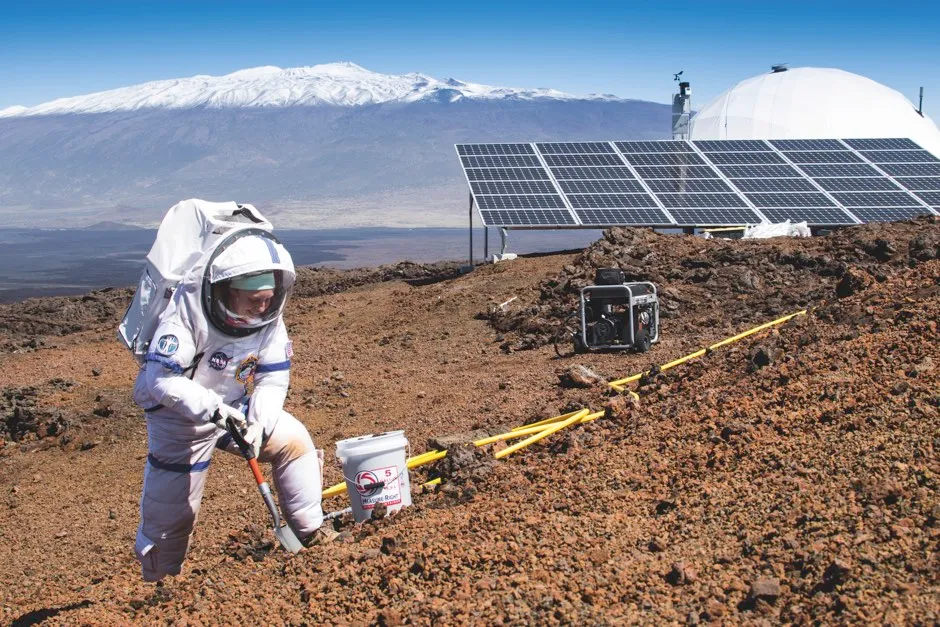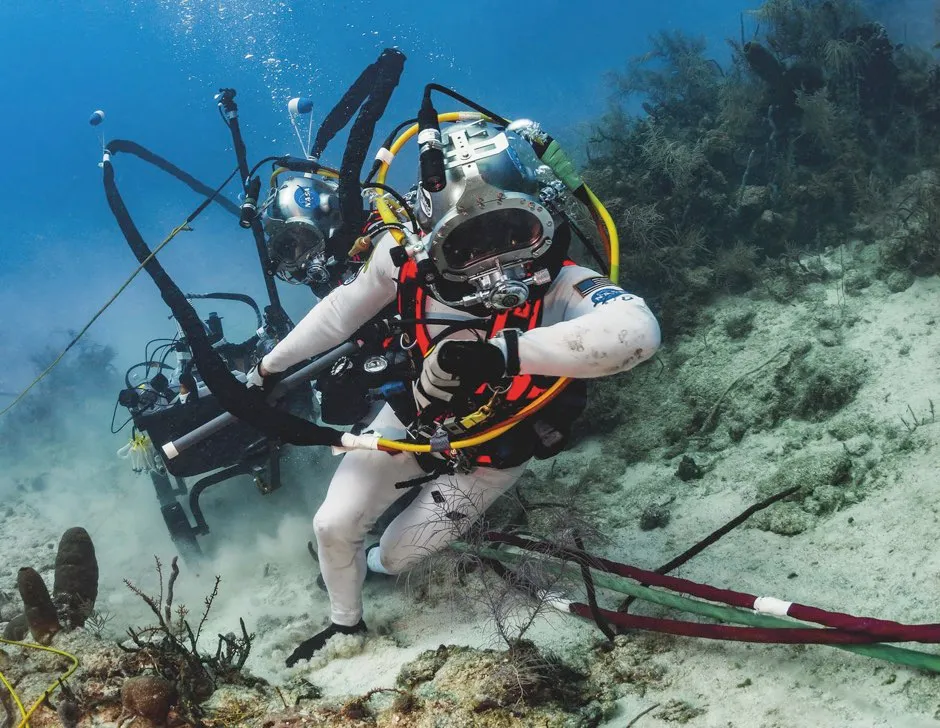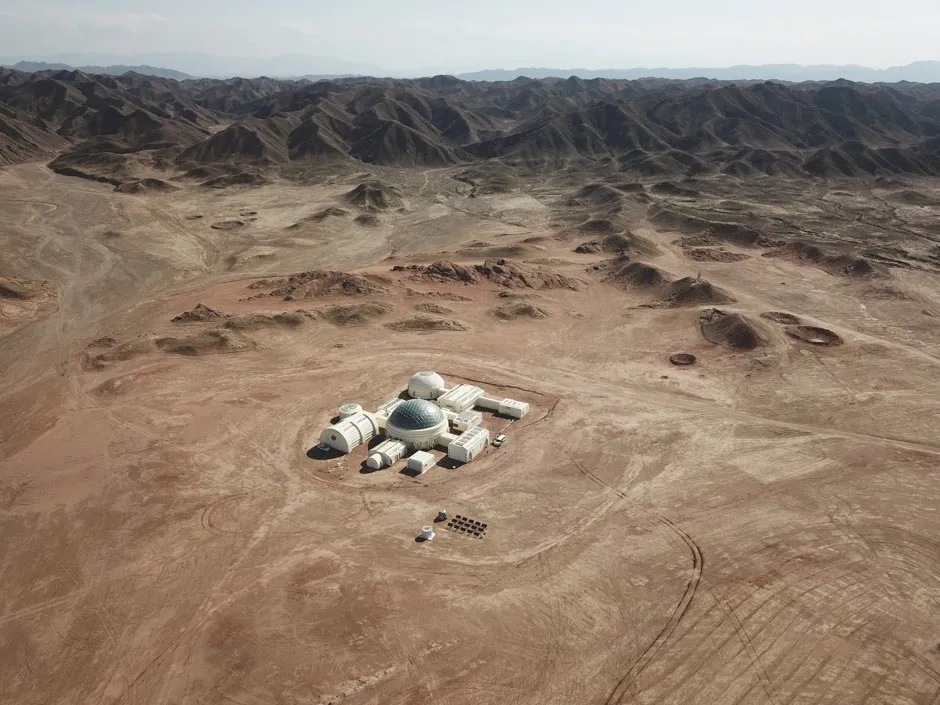1
HI-SEAS, Big Island, Hawaii, USA
A spacesuit isn’t the first outfit that springs to mind for anyone visiting Hawaii. That’s unless you’re spending eight months in the HI-SEAS (Hawaii Space Exploration Analog and Simulation) habitat on Mauna Loa volcano.

HI-SEAS allows researchers to study how people cope with the confinement, isolation and psychological pressures of long-duration space missions, such as one to Mars.
To add to the realism, there’s a 20-minute communications delay with mission control, and anyone who steps out into Mauna Loa’s Mars-like environment – such as Dr Martha Lenio – has to suit up.
Realism has given way to practicality on occasion, though, such as when budget constraints meant that hazmat suits replaced spacesuits, and shipping containers served as ‘robotic resupply ships’ (below).

Even so, lessons learnt during these missions, which can last for up to a year, are no less valid for aspiring astronauts. “It taught me the importance of having a sense of humour, strong communication skills and a flexible personality,” says Lenio.
Read more about exploring Mars:
- ESA’s Martian rover readies for launch
- China Mars lander unveiled ahead of 2020 mission
- Wild ideas in science: We've already found life on Mars
2
NEEMO, Key Largo, Florida, USA
Reproducing the reduced-gravity environment and time pressure of walking on the Moon or another planet can be a struggle. Unless that is, you go underwater, like the ‘aquanauts’ of the NEEMO (NASA Extreme Environment Mission Operations) programme.
Each NEEMO mission sees up to six prospective astronauts descend 19 metres to the Aquarius base – a cramped 37m2 habitat on the seabed 5.6 kilometres off the coast of Florida – to experience living and working in an alien space.

Pictured here is the NEEMO 22 mission, which took place during June 2017. The team is testing out the Modular Equipment Transporter System (METS), a four-wheeled cart containing interchangeable pods of tools and instruments to help astronauts carry kit over rugged terrain.
Every second counts when you’re exploring another planet. As such, the more equipment you can bring to a sampling site, the more you can maximise your time there.
As well as putting METS through its paces, the 10-day expedition also conducted in situ analysis of coral and tested out evacuation procedures.
3
C-Space Project, Gobi Desert, China
If China’s long-term plans to send a crewed mission to Mars go ahead, some of its taikonauts’ training is likely to take place here, at the C-Space Project’s simulated Martian base. For now, though, it’s tourists and schoolkids who have the run of the place.
The facility opened in April 2019, and is located in the Gobi Desert about 40 kilometres outside the city of Jinchang in the Gansu province.

Made up of nine linked modules – including living quarters, a control room and a mock airlock – it’s designed to give visitors an idea of what it’s like to work in an environment where resources are limited and every aspect of life must be monitored and controlled.
The project was dreamt up by Gansu officials and the Jinchang Star Universe Culture and Tourism Investment Company, in a bid to boost tourism in one of China’s poorer regions.
But it’s been developed in collaboration with the Astronaut Center of China, and with further investment and expansion, is intended to become an official taikonaut training site.
Read more about bringing space down to Earth:
- Small steps: How NASA prepared for the first moonwalk
- Eye on the sky: the ground-based telescopes bringing the Universe down to Earth
- How to grow food in space: the Antarctic base preparing for human space colonies
4
Pangaea-X, Lanzarote, Canary Islands
Before you can find signs of life, you have to learn how to look for it. And that’s one of the key things that the European Space Agency’s Pangaea-X test campaign – essentially a geology field trip – teaches astronauts.
Lanzarote, off the northwest coast of Africa, is an ideal site because the basalts and minerals in the rocks allow it to serve as a stand-in for both the Moon and Mars.
While they’re on the island, astronauts learn how to identify suitable sites for sampling, test out sampling techniques, and deal with the practicalities of off-world exploration, such as the communications delay with mission control.

The white probe being used in the foreground of this picture is a microscope that transmits images to the astronaut’s chest-mounted tablet. The tablet, or ‘Electronic Field Book’, documents the images and makes them available to the science operations team back at base, who can then advise on any further samples that may be required.
The project is already proving to be something of a success – the astronauts on 2017’s Pangaea-X campaign discovered previously unidentified water-related minerals in Lanzarote’s rocks, which could contain clues to the past and future habitability of other planets.
5
ARADS, Atacama Desert, Chile
The Atacama Desert reaches an altitude of up to 4,000 metres. It gets less than 15 millimetres of rainfall a year, on average, and is persistently exposed to strong ultraviolet rays from the Sun. It’s one of the harshest, driest places on Earth, but it’s not devoid of life.
There are microbes hidden in rocks and buried underground, just as there could be on Mars, which is why NASA comes here to test ways of searching for them.

Between 2016 and 2019, the Atacama Rover Astrobiology Drilling Studies (ARADS) project came here to test the K-REX2 rover (above).
Unlike existing Martian rovers, which can only collect samples from the surface or just below it, this prototype is more advanced. It’s equipped with a ‘smart’ drill, adjusting the pressure needed to bore through different types of geology and collect samples from depths of up to two metres.
Take a look at more brilliant science photos:
- The Orkney Islands: The energy revolution starts here
- The mice of the London Underground win the Wildlife Photographer of the Year 2019 LUMIX People’s Choice Award
- Seven beautiful clouds to brighten your day
6
CAVES project, Sardinia, Italy
Stress affects performance. And with so much at stake – your mission, your spacecraft, the lives of you and your crew – space is probably the most stressful environment there is. As such, any prospective astronaut needs to be able to perform under pressure. Which is where the European Space Agency’s CAVES project comes in.

CAVES is an annual two-week course in which astronauts from all over the world learn how to work together by venturing deep into the caves beneath Slovenia or the island of Sardinia, staying underground for six consecutive days.
Living and working in such a confined environment tests everyone’s patience to the limit, as they learn to navigate, use tools and maintain the continuous vigilance needed to keep each other safe – the same skills required during a spacewalk.